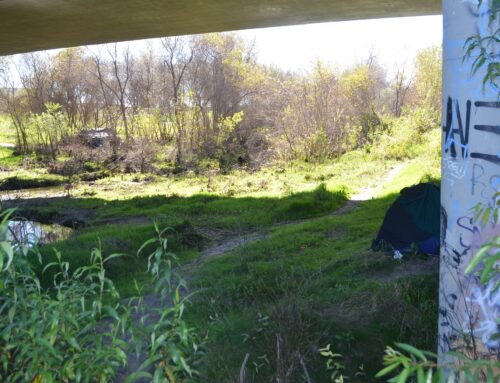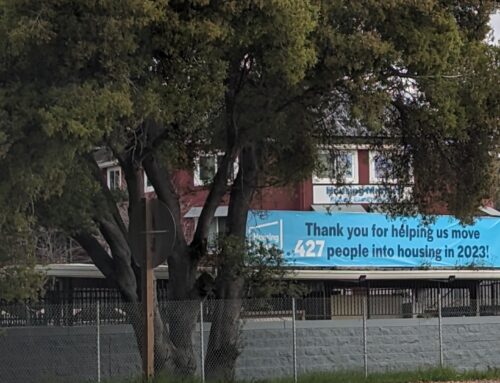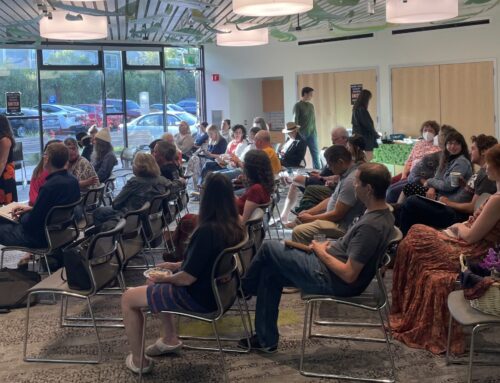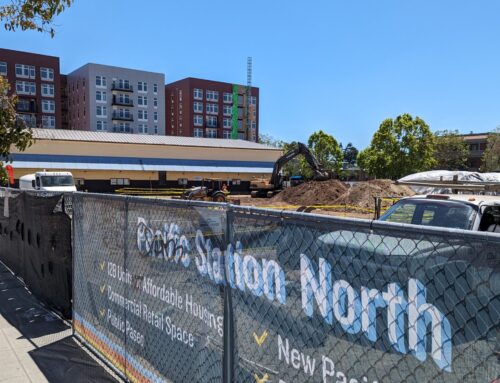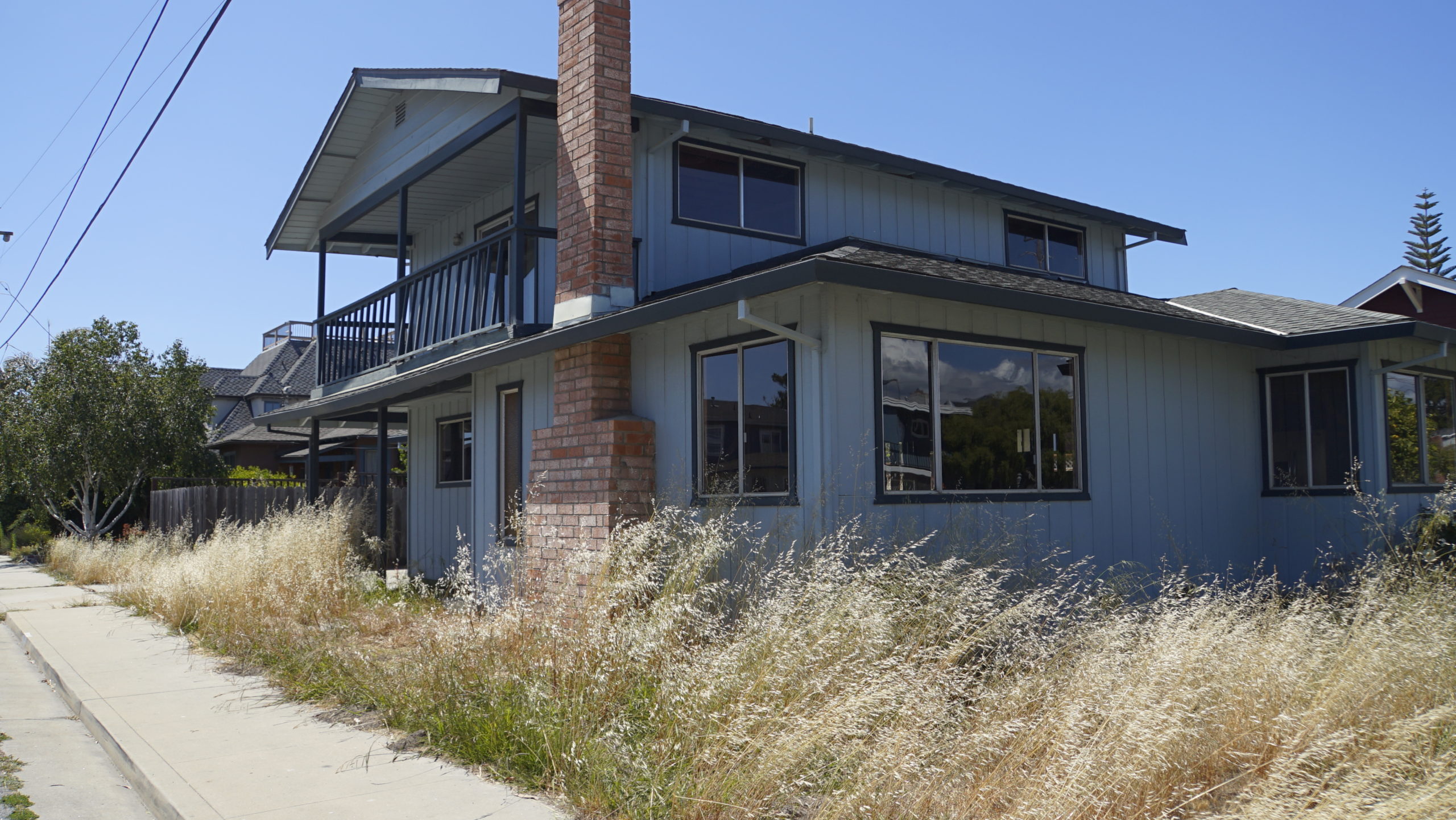
A four-bedroom home near West Cliff Drive in Santa Cruz sits empty in June after it was sold for $2.3 million in November. Homes under active construction would be exempt from a proposed tax on empty homes. (Kara Meyberg Guzman — Santa Cruz Local)
SANTA CRUZ >> Santa Cruz city voters are likely to see a question on the November ballot on whether to add a tax on homeowners who leave homes vacant for most of the year.
The potential tax has two aims: to incentivize owners to rent or live in vacant homes, and to raise money for affordable housing projects for lower-income residents who struggle with the region’s rising rents and lack of housing.
“We have honestly received a landslide of either emails or phone calls: ‘I’m the only one on my street. Nobody’s home on my block all year, except Fourth of July.’” said Cyndi Dawson, campaign manager for the Empty Homes Tax.
City leaders in Capitola are also considering a tax on empty homes, and Capitola City Manager Jamie Goldstein said last week that he was looking into water bills as an indicator of vacant homes. Dawson said the Santa Cruz Municipal Utilities District data showed 14,255 active meters and 838 meters with zero water use for at least eight months. But some of those homes are in Live Oak and would not be subject to the proposed tax. Also, some water use could just be for landscaping on vacant homes, Dawson said.
Dawson added that she’d heard from residents from the Upper and Lower Westside and Eastside who reported some empty homes. “Everybody has that story where nobody’s home. It’s a citywide phenomenon,” Dawson said Friday.
The city of Santa Cruz has about 24,000 housing units, according to the 2020 census. Dawson estimated the city has “over 1,000, probably closer to 2,000 empty homes.”
- From 2015 to 2020, Census Bureau surveys suggest that 1,806 homes in the city of Santa Cruz were vacant. That roughly 7.5% vacancy rate includes second homes, some homes under construction and about 582 homes used “seasonally or for recreation.”
- In the 2020 census, about 9.5% of homes in the city of Santa Cruz were considered vacant. However, travel restrictions and online education at UC Santa Cruz may have skewed rental and vacancy rates in Santa Cruz in 2020, some empty-home tax opponents have said.
- In 2021, the California Dept. of Finance found a 9% vacancy rate for the city of Santa Cruz. It used state data to refine and update Census information.
Dawson said that taxing those homes could generate millions of dollars for affordable housing efforts. But opponents are skeptical that the tax will be an effective response to the city’s housing shortage.
What has prompted a vacancy tax?
A home vacancy tax in the city of Santa Cruz would charge owners of vacation homes, investment properties, and other houses and apartments that are empty or infrequently inhabited.
“Housing costs are out of reach for many of our teachers, our child care providers, our medical workers: people who serve our community every day,” Dawson said. “We wanted to find a way to make sure that those folks can live where they work.”
Meanwhile, housing costs have become a greater share of residents’ expenses or forced them to move. Many people spend half their income on rent. UC Santa Cruz surveys from 2016 to 2018 stated that 48% of Westside respondents and 49% of respondents in Beach Flats and the Lower Ocean area spent more than half of their income on rent.
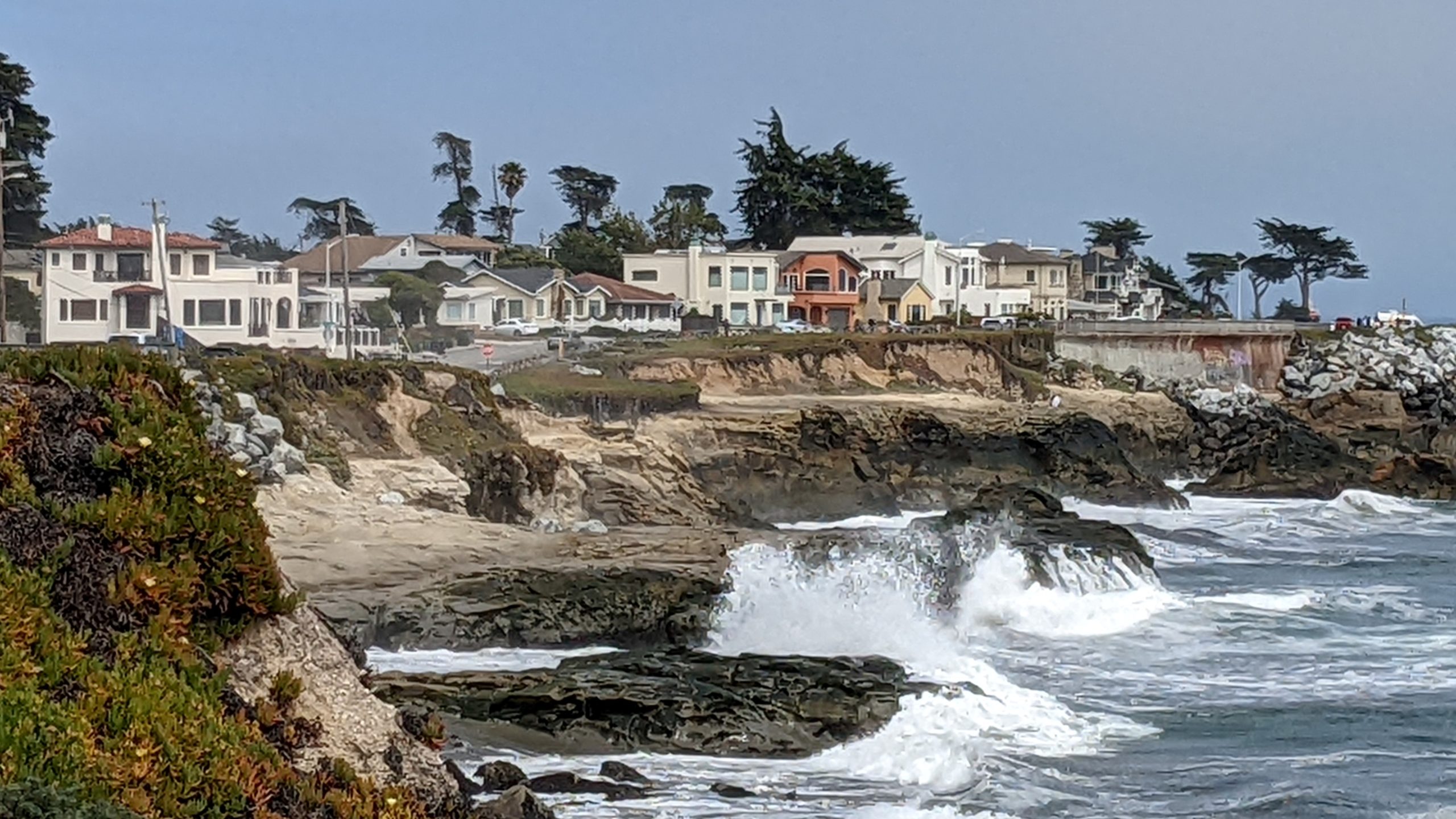
Some homes on the Westside of Santa Cruz are vacant for much of the year. (Stephen Baxter — Santa Cruz Local)
How the tax would work
If the November ballot measure is adopted by Santa Cruz city voters, it would create several requirements:
- Homeowners within the city would be required to submit an annual form online or by mail that declares whether their home has been occupied for at least 120 days in the past year. The days do not have to be consecutive, and the home can be occupied by the owner or tenants.
- If the parcel has been occupied for fewer than 120 days in the past year, owners would pay a fee of $6,000 per parcel for a single family home, $6,000 per vacant parcel for complexes of up to six units, and $3,000 per vacant unit for complexes of seven or more units.
- The city would develop an annual audit process, and those audited would be required to provide evidence that the parcel has been occupied. The number of audits completed and the evidence required isn’t specified in the ordinance, but evidence could include a driver’s license with the address listed and water and electricity bills, said Dawson.
The Santa Cruz city initiative needs more than 50% of the vote to be adopted. In 2024, homeowners would have to submit declarations of occupancy for 2023, according to the proposed law.
The initiative includes several exemptions from the tax:
- Homeowners who experienced a major medical event or active military deployment.
- Buildings under active construction.
- Owners waiting for building permit approval or development entitlements from the city.
- The 250 parcels permitted under the city’s Short Term Rental Ordinance.
Most of the money raised would fund the construction of new affordable housing projects, or convert existing residences into affordable housing.
- The housing must be for residents with low-, very low-, or extremely-low income compared with Santa Cruz County’s area median income.
- Up to 5% of the money could be used for hygiene, sanitation, and bathroom services for the homeless.
- Up to 15% could be used to implement the tax.
“We really are providing an opportunity for property owners to step up and take a very small amount of time once a year to help keep Santa Cruz accessible to everyone, to these critical workers that really make Santa Cruz the place it is,” she said. “This ordinance is about neighbors wanting more neighbors. We want our neighbors to be home.”
Other cities’ experiences
Santa Cruz’s Empty Home Tax is modeled after similar vacancy taxes implemented in Oakland and in Vancouver, Canada. Organizers in San Francisco are collecting signatures to put a similar ordinance on the city’s November ballot. The Capitola City Council also plans to consider a vacancy tax proposal for the Nov. 8 ballot.
Oakland Vice Mayor Rebecca Kaplan was a major supporter of the Oakland vacancy tax, which was approved by voters in 2019.
During a conference with community group Reimagine Santa Cruz Feb. 10, Kaplan said the measure has been successful both in raising money for homeless services and reducing the number of vacant properties.
“It can work, it can pass, it can make a difference,” Kaplan said.
In the two years the tax has been assessed in Oakland, it has raised $14.4 million. About $2.2 million was raised from residential properties; the remainder were from vacant units in commercial or mixed-use properties, according to an Oakland representative. Oakland’s vacancy tax applies to residential and nonresidential properties, including undeveloped land and commercial properties.
The number of residential parcels assessed for the tax fell 3% from 2019 to 2020. The decrease is “a result of multiple factors,” a city representative wrote in an email.
While some owners are beginning to use their properties, others have applied for building or RV parking permits, sold the property, or donated parcels to the city, the representative said.
There are a few key differences in Santa Cruz’s proposed law.
- Unlike the Oakland law, the Empty Home Tax wouldn’t apply to commercial properties or vacant lots.
- Although Oakland City Council lowered the tax from $6,000 to $3,000 for many properties within the first year of the tax, the Santa Cruz City Council wouldn’t have the power to lower the tax without another ballot measure.
Many details of how the Santa Cruz Empty Home Tax will be assessed, including how many audits will be performed, and if residents will be able to report suspected vacant homes, are not spelled out in the ordinance. That’s to give the city flexibility in how it collects the tax, Dawson said.
Opponents raise concerns
Retiree and longtime Santa Cruz resident Carol Polhamus said the ordinance’s focus on vacant homes is a distraction from the root causes of Santa Cruz’s housing crisis.
“I think people are appropriately frustrated about the fact that there isn’t enough housing. To me the biggest reason is we haven’t built any,” she said. “I think that that’s the heart of the matter.”
Polhamus called the census vacancy numbers “wildly inflated,” considering that the census took place during the beginning of the COVID-19 pandemic and many students were living elsewhere. She pointed to a report from the U.S. Dept. of Housing and Urban Development that estimated a 0.1% vacancy rate for owned houses, 1.7% for owned condominiums, and 1.9% for all rentals.
“The most generous estimate, I think, from me doing the math is that there might be 200 empty homes” in Santa Cruz, she said.
The vacancy rates in that report are calculated from statistical models that use the change in the rental and housing market since the 2010 census to estimate current vacancy rates, said Housing and Urban Development economist Elaine Ng, who worked on the report. “HUD does not conduct surveys to arrive at these estimates,” she wrote in an email. The rates do not include vacation rentals or other infrequently-used homes, she wrote.
With the costs of creating and maintaining the program, Polhamus worried that the program will cost more money than it brings in.
In 2019, the first year Oakland collected its vacancy tax, the city spent nearly $500,000 to create an online portal for property owners and administer the tax, according to city records. The following year, it spent about $200,000 to run the program.
Dawson said Santa Cruz’s program might not be as costly. Rather than using Oakland’s method of charging the tax only on homes the city determines to be vacant, the Empty Homes Tax would require all homeowners to declare their vacancy status each year. Dawson said the method will result in fewer administrative costs.
The Capitola City Council also plans to consider whether to put a tax on empty homes on the November ballot.
- Capitola city leaders estimated the cost to draft a law in Capitola is about $10,000 to $15,000, plus about $5,000 to put the measure on the November ballot and roughly $18,000 the city already spent on polling.
- Initial enforcement of a vacant home tax would cost the city about $20,000 to $30,000, then about $5,000 to $10,000 annually, Capitola leaders said.
Dawson and Polhamus said they look forward to the release of a financial impact report for the ordinance prepared by city staff. The reports will detail how the measure might affect the city, including impacts on:
- Land use, including housing availability.
- Funding for transportation, schools, parks and other public infrastructure.
- The community’s ability to attract and retain businesses.
The report is expected to be presented to the city council June 28.
Read Santa Cruz Local’s related stories
- Vacant-home tax advances in Capitola (June 10, 2022)
Santa Cruz Local’s news is free. We believe that high-quality local news is crucial to democracy. We depend on locals like you to make a meaningful contribution so everyone can access our news. Learn about membership.
Jesse Kathan is a staff reporter for Santa Cruz Local through the California Local News Fellowship. They hold a master's degree in science communications from UC Santa Cruz.


